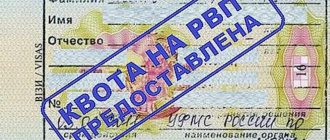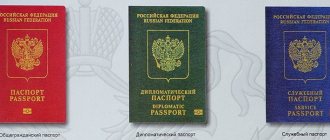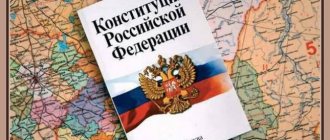Natural decline in Russia exceeds natural population growth. There are gradually fewer of us. In recent years, due to migrants, the population of the Russian Federation has not been declining so rapidly. But can this be considered a worthy way out of the situation? How are migration problems solved in Russia in 2021?
Of course, due to the spread of the COVID-19 coronavirus and subsequent quarantine restrictions, the number of migrants has decreased significantly. However, this factor influenced the growth of illegal migrants.
They come to us
Russia is in the top five countries attracting migrants, along with countries such as the USA and Canada. But if in Western countries there is a need for qualified labor and applicants undergo a rigorous selection process, then people without education, without knowledge of the Russian language, and without any qualifications at all go to Russia to work. This trend of influx of cheap labor from the countries of Central Asia and Transcaucasia has existed since the early 2000s.
Economic problems
On the one hand, the influx of foreigners who do not require large salaries makes it possible to withstand competition in the market, reducing the cost of the production process, but on the other hand, all the money earned is sent to the family and spent outside it.
Most of the workers who arrived are illegal immigrants. This means that employers profit from their labor and do not make any contributions to the budget. In addition, if there is cheap labor, there is no need to introduce new technologies and develop.
Unemployment
There is an opinion that the need for foreign labor in Russia is greatly exaggerated. Immigrants from the former Soviet republics create problems with work for local residents. The labor of foreigners is paid so low that not a single Russian can simply survive on such a salary, not to mention support his family. This is beneficial only for employers.
Cultural issues
In some regions there are so many migrants that they create entire separate settlements, and this makes it difficult for them to assimilate into Russian society. Russia must solve the problem of the demographic crisis. But to populate your territories with people who are not carriers of Russian culture, sometimes who do not know the language, means endangering the socio-cultural values of the country to some extent. What will the average Russian be like in ten to twenty years?
Problems of international migration
In the modern world, more and more entities are actively working to promote the positive aspects of international migration.
Restructuring of the economic sphere and population dynamics contribute to decision-making that determines the role of migrants in meeting the demand for labor resources in certain sectors and in maintaining international relations necessary for the functioning of the global economy.
Need advice from a teacher in this subject area? Ask a question to the teacher and get an answer in 15 minutes! Ask a Question
Note 1
More and more countries are realizing that international migration is an integral component of the development and functioning of a modern economy.
The financial and economic crisis of 2007 led to a global increase in unemployment, especially in developed countries, which are major destinations for international migrants.
Contemporary problems of international migration include:
- illegal migration;
- influx of unskilled labor;
- growth of government barriers;
- discrimination against migrants based on nationality, gender, education, religion;
- "brain drain";
- activation of the functioning of trade unions;
- growth of xenophobia and racism;
- increase in crime (drug distribution, creation of far-right organizations, criminal groups, etc.).
Internal migration
In Russia, population density is heterogeneous. Everyone who wants to make money tends to go to big cities: this is what both the science of migration phenomena and simple common sense advise. Vast territories in the north and east will soon have to be redeveloped. People leave their habitable places because they do not see any prospects; small settlements, having lost their city-forming enterprises, are quickly degrading. Those who cannot leave, or those who do not care, remain in them.
Migration from the country
Russia's population is declining not only due to natural decline. People with in-demand professions are trying their best to settle in Europe and America.
While qualified, literate, able-bodied Russians, who have not found worthy employment in their home country, move abroad, their place is taken by low-skilled builders and general workers from neighboring countries.
Problem solving
Migration problems in Russia have been resolved at the legislative level in recent years. In 2014 and 2021, a number of laws were adopted changing the procedure for foreigners staying in the Russian Federation. All of them have already come into force.
Tests
Anyone who wants to get a job in Russia will need to pass an exam on knowledge of the Russian language, history and laws of the Russian Federation. Thus, the Russian authorities want to increase the educational level of migrants and increase budget revenues. From June 1, 2015, all foreign drivers of commercial vehicles must have a Russian license.
Entry - only with a foreign passport
All citizens of CIS countries now need a foreign passport to enter the Russian Federation. Only the decision on Ukraine has not been finally made, or rather, it has been postponed indefinitely. The amount of state duty for processing documents at the Main Department of Migration Affairs of the Ministry of Internal Affairs has increased.
Patent for work
Instead of a work permit, a patent is now issued, and it is valid only in the region where it was received. Previously, such patents were issued only for work for individuals, but now they are issued for employment with a legal entity.
To obtain such a document, you need to undergo a medical examination, pass exams, obtain a tax identification number and health insurance, and all this within 30 days from the date of entry into the country. Employers are invited to participate in the payment of all these procedures if they are truly interested in the employee.
Penalties for using illegal labor have been tightened. Illegal immigrants who violate the migration regime for a long time may be denied entry into the Russian Federation for up to 10 years.
Problems of migration policy of the Russian Federation and possible ways to solve them
Rate this article
One of the existing problems in migration policy is the possibility of solving the problem of demographic development of Russia in the 21st century.
The complexity of the situation in the sphere of ensuring internal security is clearly demonstrated by the problem of combating illegal immigration in the Russian Federation. This problem is the most difficult for today's Russia.
There are no exact data on the scale of illegal labor migration to and from Russia. Estimates of the total number of illegal migrants vary - from 1.5 to 15 million people. The number of illegal migrants from foreign countries ranges from several hundred thousand to 2 million.
According to other estimates, at least 5 million foreign citizens and stateless persons who arrived from 60 countries with unfavorable internal political, socio-economic, environmental, sanitary-epidemiological and complex demographic conditions are in the Russian Federation in violation of passport, visa and immigration regimes, labor legislation the situation.
The difficult socio-economic situation in many CIS countries creates incentives for migration. Numerous interethnic conflicts (in particular in the Caucasus region) generate flows of refugees, a significant number of whom also join the ranks of illegal migrants. However, many of them settle on Russian territory. The bulk of illegal migrants from foreign countries are Kurds, Afghans, Chinese, Vietnamese, Iraqis, Somalis, citizens of Bangladesh, India, Ethiopia, Sri Lanka, Nepal, Angola, and Nigeria.
Among the main factors of threat to the security interests of Russia associated with illegal migrations, the following can be identified.
First, illegal immigration increases the level of criminalization of the host society. The transportation of migrants itself has become a well-organized business. The fee for transporting one migrant ranges from $300 to $7,000, not counting the fee for temporary accommodation in transit countries. Numerous travel companies and modeling agencies are often legal fronts for trafficking migrants (mostly women). Typically, the purpose of transportation—involvement in prostitution—is disguised as employment in bars, modeling agencies, and as servants in private homes.
Illegal transportation across the border is closely related to arms smuggling and drug trafficking, which involves both corrupt government officials and residents of border areas. Recently, children who are not subject to the Criminal Code by age are increasingly being used as carriers. Among illegal migrants there are often people associated with terrorist groups and the criminal world, hiding from the authorities of the countries they left. In places where illegal immigrants live densely, the crime rate increases. Bandit elements and representatives of non-traditional religious faiths, including those recognized as dangerous to society, sometimes arrive in the country under the guise of migrants. The illegal activities of migrants range from administrative violations to the commission of grave and especially grave crimes. In a number of constituent entities of the Russian Federation, there are organized criminal groups (OCGs), formed from representatives of near and far abroad, as well as domestic criminals. The media notes their merging with local and foreign mafia structures. There is a division of spheres of influence between ethnic OPTs. As noted in the newspaper “Vzglyad” in 2010.
Secondly, illegal migrants pose a threat to the economic security of the Russian Federation. Their labor is used illegally, in the shadow and criminal sectors of the economy (prostitution, smuggling). The more illegal migration develops, the more difficult it is to control the real economic situation, and the direct damage from non-payment of taxes and export of currency abroad increases. According to estimates by the Center for Demography and Human Ecology of the Institute of Economic Forecasting of the Russian Academy of Sciences, the average annual profit from the use of the labor of illegal migrants, on which taxes are not paid, at the beginning of the 21st century amounted to about $10.5 billion annually, and the amount of capital “flight” abroad from its export by migrants - about 5.6 billion.
Thirdly, illegal immigration poses a threat to the health of both the migrants themselves and the population of their host country. Illegal immigrants, including those arriving from areas with an unfavorable epidemiological situation, do not undergo medical examinations, and their ability to access medical care is limited. The process of illegal transportation itself, unsanitary living conditions, and difficult working conditions also contribute to the increase in morbidity among immigrants. Their illegal import into the country's markets of products that do not meet sanitary standards also poses a threat to the health of Russians. As the chief sanitary doctor of Russia G. Onishchenko noted in 2010, more than 34 thousand foreigners who underwent examination were diagnosed with infectious and viral diseases, including HIV, hepatitis and tuberculosis. Even those foreigners who work in markets, catering establishments and trade did not have medical records.1
Fourthly, the increase in the number of immigrants (both legal and illegal) on the territory of Russia leads to an increase in ethnic tension in those regions where communities and communities of other cultures arise. So far, there are no visible ways to ensure social stability in such potential centers of foreign cultural expansion as Moscow, the Far East, the South of Russia (especially the Krasnodar Territory) and the Kaliningrad Region. Thus, judging by survey data, 47% of native Muscovites surveyed have dislike for foreigners.
In the relatively sparsely populated regions of the Far East, rich in raw materials, expansion from the countries of the East (China, Korea, Southeast Asia) is socially non-aggressive and can even contribute to their economic development. But in the long term it can become a source of serious friction, since it is not opposed by a culturally homogeneous systemic majority for which the defense of state integrity would be a vital priority.
The south of Russia has traditionally been subject to influence and sometimes direct aggression from ethnic groups influenced by Islamic fundamentalism. Here, a readiness to aggressively resist foreign cultural influences is being formed, based on the support of part of the local elite, but it is perceived with great caution in other regions of Russia.
The Kaliningrad region acts as a zone of targeted regulation of interests, the parameters of which are determined by the state of Russian-German relations and the degree of Russia’s integration into the structures of the European Union.
The Russian Federation has much fewer financial and material resources to solve its internal security problems than Western countries. This suggests the need for a much more careful and measured approach to their spending and distribution.
Data from a survey of illegal migrants revealed the presence of a number of characteristics of their composition, comparable to the socio-demographic structure of the legally registered foreign labor force. A comparative analysis of the qualitative characteristics of legally employed foreign workers and illegal migrants makes it possible to determine the influence of illegal immigrants on the state of the labor potential of individual regions. Thus, in the totality of illegal immigrants surveyed, the clear majority are men (mostly married), whose share is about 70%. In the overall flow of illegal labor immigrants, their share is even higher - 87%. At the same time, the ethnic factor plays an important role in the structure of illegal immigrants by gender. In the overall structure of illegal migrants, the largest proportion of men is characteristic of citizens of Afghanistan - 80.8%, immigrants from the Transcaucasian republics - 60.5%. Along with other categories of migrants, illegal migrants participate in the formation of other qualitative characteristics of the labor resources of Russian regions. According to the survey, the average age of an illegal migrant was 32 years, which indicates his high potential for migration mobility. Of the total, more than two-thirds were between 18 and 40 years of age. In these age categories, the share of economically active illegal migrants is also one third higher than in the structure of the economically active population on average for the Russian Federation.
Let's consider the main directions of the fight against illegal migration.
Moscow and the Moscow region, the Stavropol Territory and the Rostov Region, and the Krasnodar Territory experience a large migration burden. The number of illegal migrants in the constituent entities of the Russian Federation is estimated from several dozen people (Nenets Autonomous Okrug - 40 people) to several hundred thousand people (Moscow region and Moscow, Novosibirsk and Saratov regions, Krasnodar and Stavropol territories).
As a significant portion of foreign citizens indicate, they enter the Russian Federation on completely legal grounds, but then evade registration with Russian law enforcement agencies, engage in illegal labor and other activities, including illegal ones, and actually become classified as illegal migrants. There is also the entry of foreign citizens using fake passports and visas, including bypassing checkpoints across the state border. The main areas of employment of illegal migrants include: trading in markets, seasonal construction and agricultural work, public catering, work at service stations, in public utilities, in the private sector, and in the service sector.
In order to prevent and suppress illegal migration to Russia, the following measures have been and are being taken.
In 2002, by the Decree of the President of the Russian Federation “On improving public administration in the field of migration policy,” the Federal Migration Service (FMS Ministry of Internal Affairs of Russia) was introduced into the structure of the Ministry of Internal Affairs of Russia, which, along with other functions, was entrusted with “the development and implementation of measures to prevent and suppression of illegal migration, implementation of immigration control in relation to foreign citizens and stateless persons.” The FMS includes divisions for migration affairs of the constituent entities of the Russian Federation, immigration control posts at checkpoints across the state border, institutions providing temporary accommodation, maintenance of forced migrants, their rehabilitation and material support, as well as representative offices for migration affairs of the FMS of the Ministry of Internal Affairs of Russia abroad ( Armenia, Turkmenistan, Kyrgyzstan, Latvia). These offices operate within the framework of bilateral agreements on regulating the process of voluntary resettlement and protecting the rights of displaced persons. In addition to the above-mentioned states, such agreements have been concluded with Azerbaijan, Belarus, Kazakhstan and Ukraine. Draft intergovernmental agreements in the field of external labor migration with Tajikistan, Kyrgyzstan, and Vietnam were also approved. Negotiations are underway within the EurAsEC, with Mongolia and Portugal.
In 2003, the Russian Government. The Federation adopted the Concept for regulating migration processes in the Russian Federation, which, in particular, provided for strengthening control over immigration processes in the country. Penalties have been tightened for employers who illegally employ foreign workers. Since August 2003, an experiment has been carried out on the formation of immigration inspections in the constituent entities of the Russian Federation, which have the right to check the legality of the presence of foreigners in Russia, to carry out their detention, deportation or administrative expulsion. Such units were created in Moscow, Moscow region, Krasnodar and Altai territories, and the Republic of Tatarstan. The first accumulated experience shows a fairly high efficiency of their operational use. Relevant work is being carried out to extend this experiment to other constituent entities of the Russian Federation, changes and additions have been made to the current legislation in order to grant the right of the immigration inspection unit to carry out operational investigative activities. In addition, it is planned to deploy additional immigration control posts, taking into account their effective operation.
One of the main directions in the field of preventing and suppressing illegal migration was the improvement of migration legislation. Corresponding proposals were made to the federal laws “On Citizenship of the Russian Federation”, “On the State Border of the Russian Federation”, “On the Police”, “On the Procedure for Exit from the Russian Federation and Entry into the Russian Federation”, “On the Legal Status of Foreign Citizens in the Russian Federation”, “On Refugees”, “On Forced Migrants”, in the Criminal and Criminal Procedure Codes of the Russian Federation, in the Code of Administrative Offenses, the Labor Code of the Russian Federation and other regulatory legal acts, including a number of agreements between Russia and the CIS countries. On February 14, 2003, migration cards came into force - documents containing information about foreign citizens entering the Russian Federation, as well as serving to control the temporary stay of foreign citizens in the Russian Federation. The issue of automated entry of a migration card into the immigration database has been practically resolved. In addition, a federal database of fingerprint registration of asylum seekers in Russia and migrants suspected of committing a crime is being created. At the initiative of Russia, the Council of Heads of Government of the CIS member states decided to intensify measures to create a common database on illegal migrants and persons whose entry into the member states of the Agreement on Cooperation of the CIS Member States in the Fight against Illegal Migration is closed in accordance with their current national legislation, and exchange of information on illegal migration.
Many constituent entities of the Russian Federation at their level adopt regulatory legal acts aimed at preventing and suppressing illegal migration and regulating external labor migration.
At the same time, all the problems of the migration policy of the Russian Federation cannot be solved by adopted laws, since according to the current legislation, a migrant who legally entered the territory of Russia and completed his registration often loses his job, therefore, loses his official status and moves into the shadow sector of the economy .
Unfortunately, at present, having paid the state fee and received a work permit, a foreigner acquires almost the same rights as a Russian. The state is obliged to help him find a job, and if he fails, register him with the labor exchange and pay the appropriate benefit. One can only guess: how many new unemployed people will appear, and what funds will be spent on their maintenance. This raises the question: why do we need so many unskilled labor resources? Often they have a very poor command of the Russian language, they do not know and do not want to delve into the intricacies of the foundations and customs of the place of immigration.
There is another danger that migration innovations could result in big problems with employment for our citizens. Since dumping wages are rampant throughout the country, in which employers create jobs with reduced wages.
The main problems in the field of migration policy in Russia and possible ways to solve them are indicated in Table 3.17.
Bringing migration processes out of the shadows. The most important task of the Russian state is to bring migration flows into a legal channel.
Migration amnesty. Civil amnesty means the legalization of persons illegally staying in the country. This is a peaceful, civilized way to reduce the illegal sector as much as possible using minimal means.
One of the conditions must be knowledge of the Russian language.
The civil amnesty procedure must be carried out once and within a limited period (for example, six months). It is also possible to carry out legalization for a certain period, during which a person must decide whether he remains in the country or leaves it.
Migrant amnesties have been used at various times by countries with the strictest migration regimes in order to reduce the pressure of the burden of illegal migration on the economy: USA (1987), Australia (1980), Venezuela (1980), Greece (1998), Italy (1998), France (1981) ), Spain (1991). Abroad, the main condition for amnesty for illegal immigrants is the presence of a place of work or a source of income. In Greece, the applicant must demonstrate payment of social security contributions at least 40 working days in advance. In Italy, it is required to present an employment contract or a license to engage in private practice or activity. Sometimes the applicant must confirm the possibility of purchasing or renting residential premises.
From September 22 to December 1, 2005, the Federal Migration Service (FMS), as an experiment in several cities, significantly simplified the registration procedure for labor migrants - they received work permits directly at construction sites and markets. In general, the experiment was successful and brought 350 million rubles to the treasury in the form of state duties and taxes paid. The FMS is currently working on a plan for a nationwide migration amnesty.
When conducting a civil amnesty, the political will of the country's leadership is very important. Amnesty is truly successful when it is carried out as a one-time event.
Thus, the amnesty must be accompanied by an intensified fight against illegal immigration. The experience of France may be useful here. In 2005, France decided to create Europe's first immigration police.
When conducting a civil amnesty, the political will of the country's leadership is very important.






